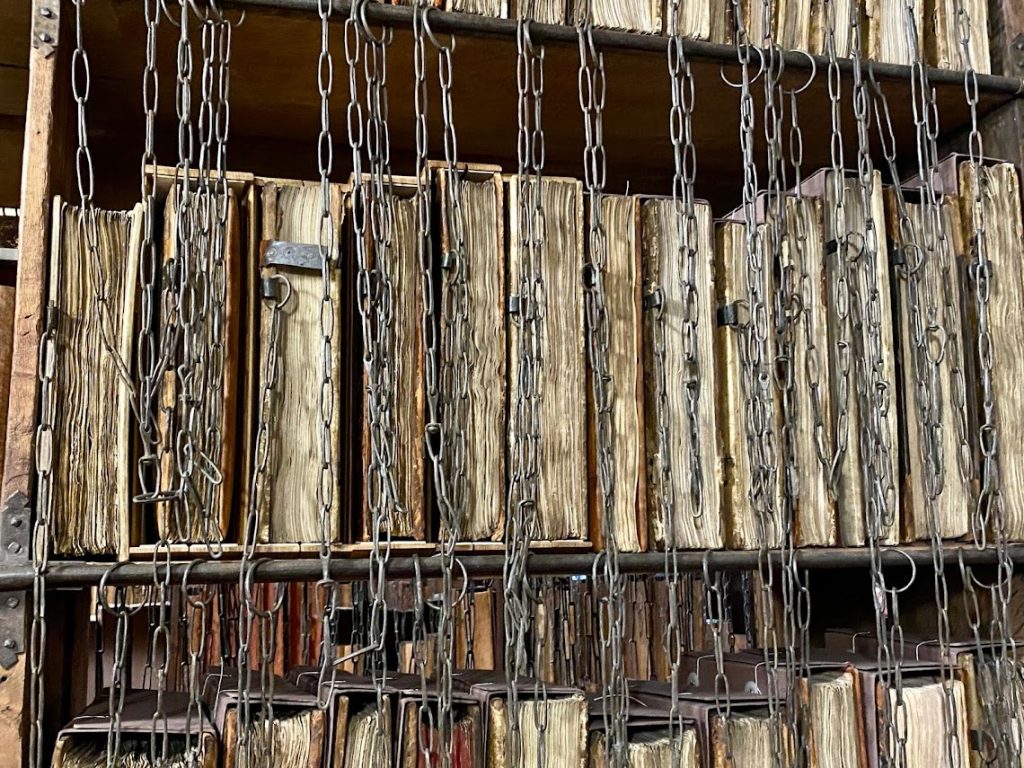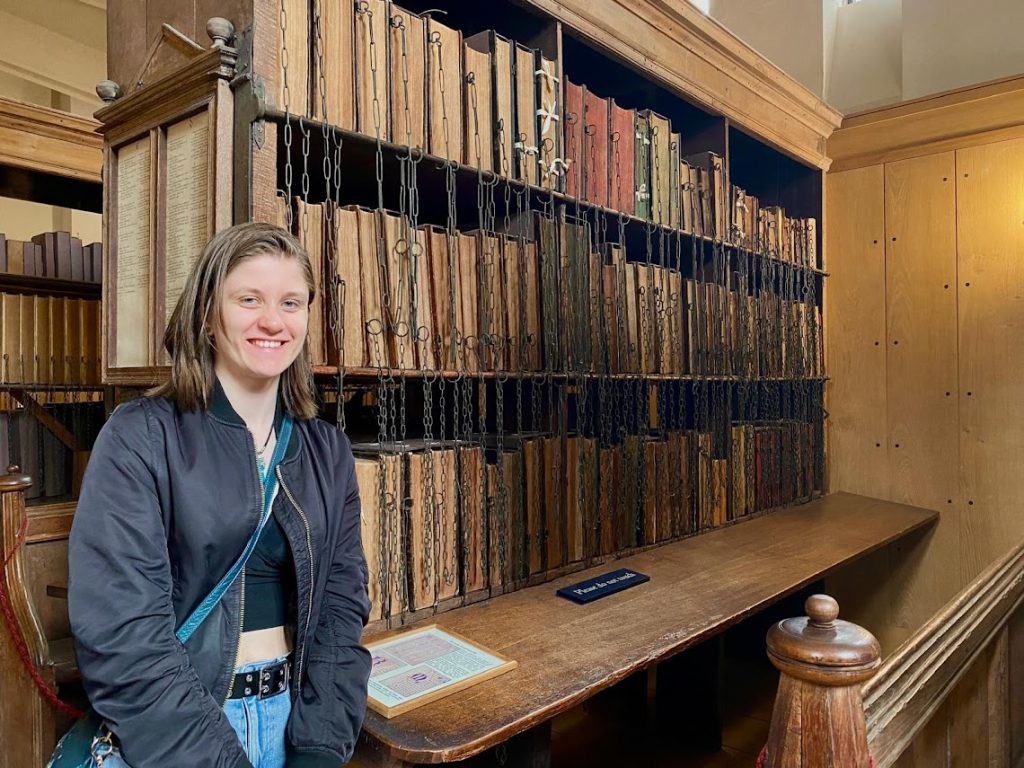Chained Library – Skyla Investigates Part VII
Introduction
Welcome back to another historical nugget! The months are really flying by now, can you believe that this is my seventh investigation? I have been receiving such lovely feedback about my research articles, it motivates me to do each and every one of them. I have you all to thank, because without you I would merely be shouting into the void. Anyway! To be on theme with The Haunting of Hecate Cavendish this month I will be looking into Hereford Chained Library – which is located in Hereford Cathedral. I will also be looking into some of the history of chained libraries and why they were used.
Hereford Chained Library Origin
Currently, The chained library is located in a section of the New Library Building, which is attached to the Mappa Mundi exhibition and at the rear of the Cathedral. The section with the chained library in it has special controlled environmental conditions to preserve the books themselves. It prevents the books from potentially getting damp or damaged. However, to keep things authentic, the books are in the original arrangement from 1611 to 1841. It makes you feel as if you’ve been transported back to the 17th century and you’re experiencing it as it was. Having now visited the library, I have discovered that the room itself is fairly small. When I think of library, I think of huge rows of bookshelves with sliding library ladders in it.
Hereford Cathedral seems to have a reputation of keeping historical artifacts well preserved, just like the Hereford Mappa Mundi being the largest and best preserved of its kind, the chained library is no different. It dates back to the 17th century and with its rods, locks and chains stuff intact, is also the largest surviving chained library. The Hereford Gospels from the 8th century are located within the library. They are the single most important book and is amongst the 229 medieval manuscripts that inhabit two bays of the library. European libraries from the Middle Ages through to the end of the 18th century would use chaining books to keep everything organized and easy to use.
Function and Reasoning
One of the main points of a chained library is to prevent people from taking the books anywhere except the table attached to the lower reaches of the shelves. Ensuring the books are not taken elsewhere helps to preserve the books. No doubt there would be far fewer books remaining for us to see today if they were not so carefully monitored and protected. The books are placed onto the shelves with their foredges facing out instead of their spines. Although this would make it harder to decipher which book is which, there was a handy little list at the end of each row indicating which book is which.
The point of them facing the ‘wrong’ way is so that the chains could be fastened to the spine of the book to then be connected to a rod that runs along the bottom of each shelf. Once you have picked a book, it can then be placed straight down onto the aforementioned table at the bottom of the shelves without the need to flip them and tangle the chains. The other end of the chain is then slotted onto the rod. These rods can actually be removed at each end of the shelf in the off chance a book needs to be removed. But of course, these rods are kept in place under lock and key to prevent just anyone from taking something.
Conclusion
I think these books are more securely locked than most people’s front doors! It just goes to show how important books are and always have been throughout history. Plus, without books, I would be unemployed! Anyway, there is an insight into chained libraries and a bit of history behind them. Please join me again soon for another historical nugget.


Everyone can make money now a days very easily.I am a full time college student and just w0rking for 3 to 4 hrs a day. Everybody must try this home online job now by just use
.
This Following Website—–>>> Dailygooglework.blogspot.Com